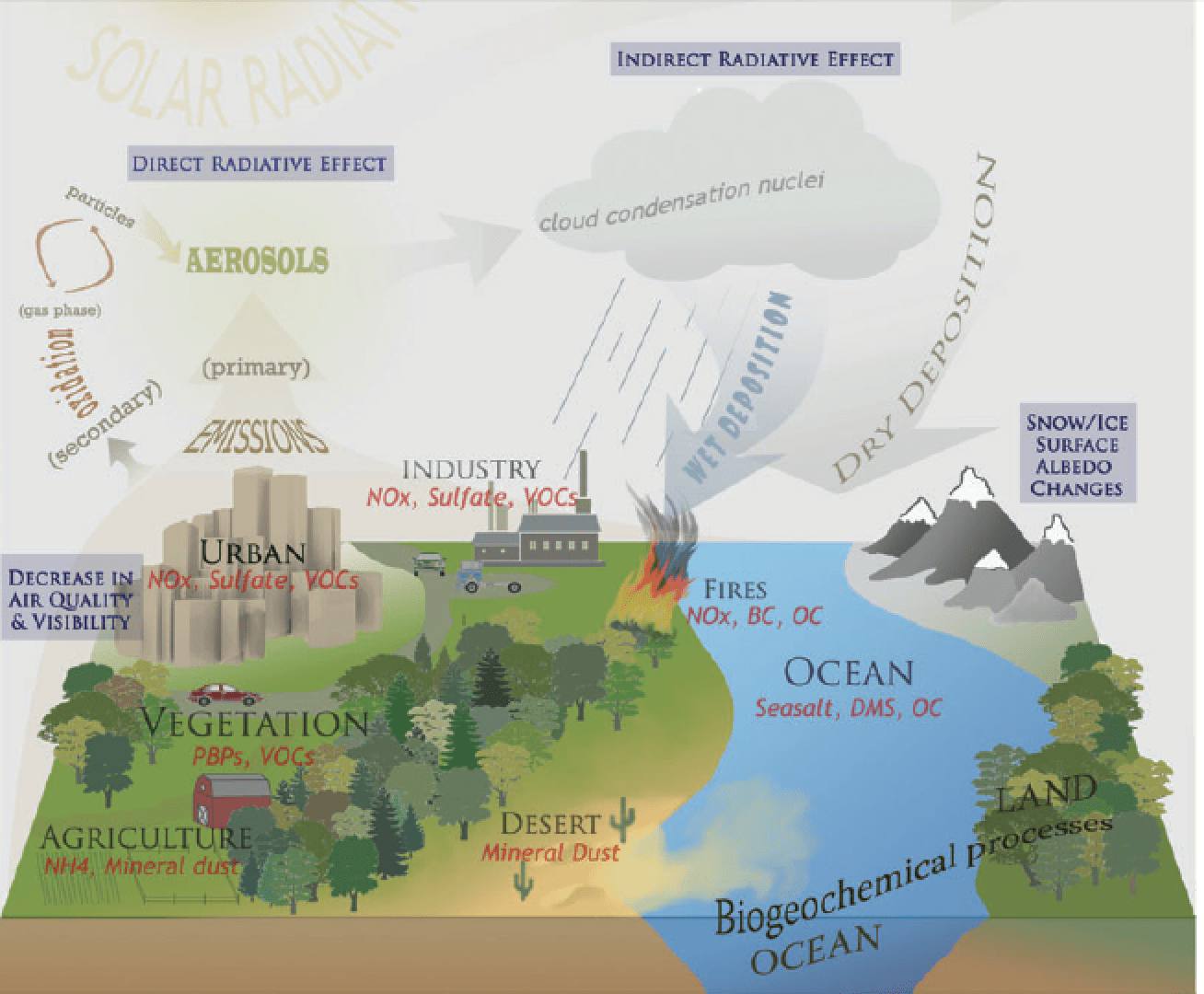Desert Dust Variability
Desert dust impacts climate through direct and indirect radiative forcing. In addition, desert dust supplies important micronutrients to the oceans (Fe and P). Desert dust has strong variability on daily, interannual, decadal and climate time scales, as well as strong gradients in space. Much of our work focuses on understanding this variability, and how it interacts with and drives climate and biogeochemical variations. We look specifically at how humans can induce changes in desert through climate change, co2 fertilization of plants and human land use.
We have many datasets available from our papers: please contact us to help select the right one.

Atmospheric Nutrient Cycles
In addition to looking at how humans can impact the desert dust cycle, we look at how naturally occurring iron in mineral aerosols becomes bioavailable, and how humans may be perturbing that cycle. In addition, we are looking at how humans may be perturbing atmospheric phosphorus deposition.

Aerosol Biogeochemistry
The impact of aerosols onto biogeochemistry is just as large as onto the climate system, but much less studied. We focus on understanding the interactions of anthropogenic and natural aerosols on biogeochemistry in the current and past clmates.

Earth System Science Modeling
We work with the Community Earth System Model to improve interactions between humans, biogeochemistry and climate. Currently we have funded projects to look at dust, fires and drought interactions with the carbon cycle and climate with collaborators across the country.

Transport
Atmospheric transport in the troposphere is important for predicting and interpreting constituent variability. Our group has focused on building, evaluating and improving transport models within chemical transport models and general circulation models.
